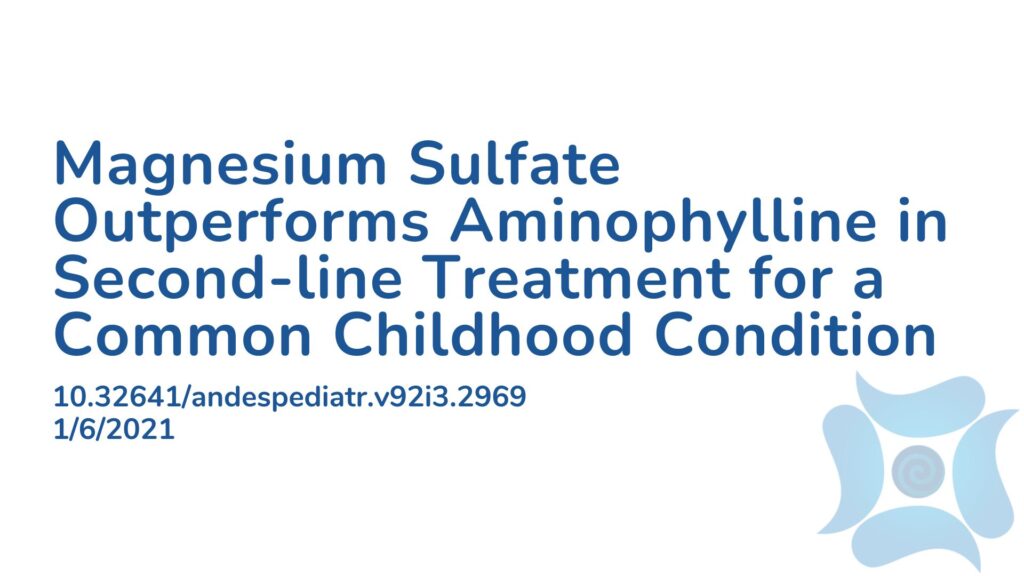Summary:
Asthma exacerbation is characterized by a progressive escalation in symptoms, often requiring a change in treatment and/or leading to hospitalizations. It can appear in individuals who already have asthma, or less commonly, as the initial presentation of the disease. Based on robust clinical evidence, commonly recommended initial treatment strategies include inhaled salbutamol, ipratropium bromide, systemic corticosteroids, and controlled oxygen supplementation. While the majority of children with mild to moderate exacerbations respond well to first-line medications, some patients with severe exacerbations are unresponsive to initial treatment. For adults, salbutamol, intravenous (IV) magnesium sulfate and aminophylline is often used, however determining the most effective option remains unclear. In adult patients, the use of magnesium sulfate is deemed useful and safe for severe exacerbations, but the consensus is not entirely shared for its application in children. This study aimed to compare the efficacy of using magnesium sulfate as a second-line treatment compared with aminophylline, in children with acute asthma who do not respond to initial treatment in the emergency room. A total of 131 patients participated in the study, with 66 in the aminophylline group and 65 in the magnesium sulfate group. In the magnesium sulfate group, there was a significant improvement in pulmonary health and oxygen saturation. Moreover, the risk of hospital admission decreased. Notably, only one adverse event (increased heart rate) was reported. The authors concluded that the administration of a single dose of magnesium sulfate demonstrated greater effectiveness and safety compared to the utilization of aminophylline as a second-line treatment.
Abstract:
Introduction: Second-line drugs for acute asthma, such as salbutamol, magnesium sulfate, and aminophylline, are generally intravenously administered.
Objective: To compare the efficacy and safety of using magnesium sulfate or aminophylline in children who did not respond to initial treatment.
Patients and Method: Randomized clinical trial. Children who did not improve the Modified Pulmonary Index Score (mPSI) receive at random magnesium sulfate (50 mg/kg/single dose) or aminophylline (5 mg/ kg/dose followed by continuous infusion at 1 mg/kg/hour for 3 hours). Primary endpoints were changes in mPSI and oxygen saturation; secondary endpoints: hospitalization rate, need for transfer to the intensive care unit, use of a third intervention, and adverse effects.
Results: 131 patients were studied (66 patients in the aminophylline group and 65 MgSO4). The mean age was 5 ± 2.3 years, the demographic and clinical parameters did not differ between the groups. In the group that received magnesium sulfate, the mPSI and oxygen saturation changed significantly in favor from 13.1 ± 1.3 to 4.9 ± 2.5 (p < 0.001) and from 3.3 ± 2.5; (p 0.021), respectively, and their risk of hospital admission (RR 0.68 95% CI [0.56, 0.82]) and of secondary failure (0.16 95% CI 95% [0 , 07; 0.38]) decreased. Only one adverse event (tachycardia) was recorded.
Conclusion: The administration of a single dose of magnesium sulfate proved to be more effective and safe than the use of aminophylline as a second- line drug.
Article Publication Date: 1/6/2021
DOI: 10.32641/andespediatr.v92i3.2969



